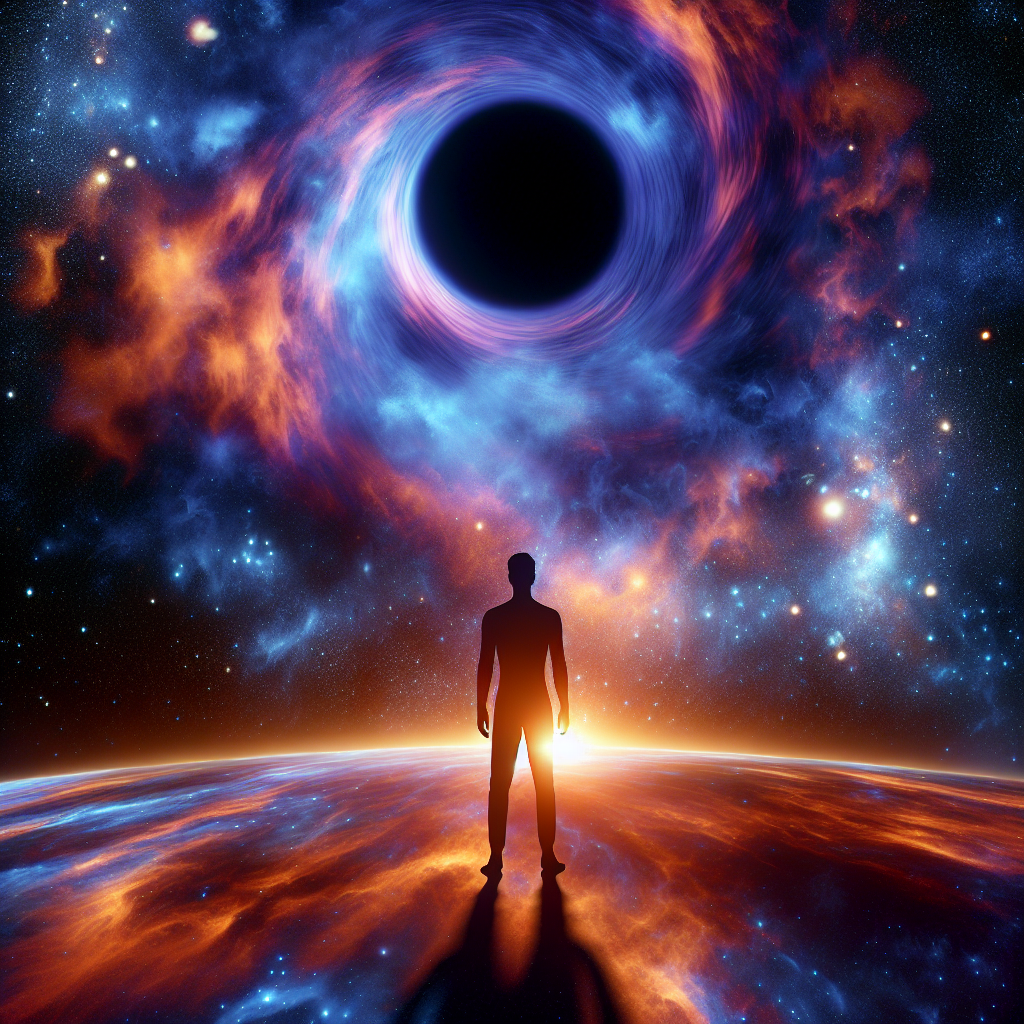Imagine, if you will, a journey where the destination transcends time and space — where the laws of physics as we understand them begin to contort in unimaginable ways. This is the journey of falling into a black hole.
The Edge of Forever: Approaching a Black Hole
As you drift closer to a black hole, the first landmark you encounter is the event horizon. Think of it as the cosmic point of no return. Here, the gravitational pull is so intense that not even light, the fastest traveler in our universe, can escape its grasp. It’s where our journey into the unknown begins.
Approaching this boundary, you would experience something known as spaghettification. Yes, it’s as strange as it sounds. Your body would stretch and elongate like spaghetti due to the intense gravitational gradients pulling more strongly on parts of you closer to the black hole. While this concept might sound like a stretch from a science fiction novel, it’s a very real scientific prediction based on Einstein’s theory of general relativity.
Inside the Event Horizon: A One-Way Street
Once past the event horizon, the core of the black hole — the singularity — awaits. The singularity is where all of the black hole’s mass concentrates. It’s a point of infinite density and the place where our current laws of physics can’t make sense of the conditions.
What happens here is beyond our current understanding. Some theories suggest that falling into a black hole could lead to other regions of the universe or perhaps to other universes entirely, a concept that tickles both the imagination and complex scientific thought. However, these remain just theories, as what happens within a black hole stays hidden behind its event horizon.
A View Unlike Any Other
As you fall, you wouldn’t just see darkness before you. The gravitational warping around a black hole can act like a lens, offering a distorted view of the universe outside. Light from stars and galaxies, bending around the black hole, might create a panoramic yet peculiar light show — a last cosmic performance witnessed before crossing into the unknown.
The Mystery Continues
Black holes remain one of the cosmos’ most mysterious phenomena. They are key to our understanding of the universe. Studies and missions, like those conducted by NASA, continually aim to unlock more black hole secrets, helping to shed light on these cosmic enigmas.
Yet, the poetic allure of black holes isn’t just in the scientific exploration but also in the metaphor they offer — an abyss so profound, a mystery so deep, that it pulls relentlessly at the very fabric of our curiosity, urging us to look deeper, to understand more, and to question everything we know about the nature of existence.
Exploration Beyond the Horizon
While human technology currently prevents us from sending anything into a black hole to see what happens (and reporting back), our advances in simulation and indirect observation continue to peel back layers of this cosmic mystery. Each piece of data collected, each hypothetical scenario tested, brings us closer to understanding not just black holes, but the universe at large.
As you gaze up at the night sky, remember that each point of light is a part of this vast, intricate tapestry of cosmos—an invitation to wonder, to dream, and to explore. And somewhere out there, among those points of light, are the enigmatic black holes, silently narrating the story of the universe in a language we are just beginning to decipher.
In conclusion, falling into a black hole would likely be a one-way trip to an unknown fate, wrapped in the spectacle of the universe’s most profound mysteries.
If you’re captivated by the mysteries of the cosmos and want to explore more about our universe, consider reading The First Time I Saw the Milky Way — And Why I Keep Chasing It.


